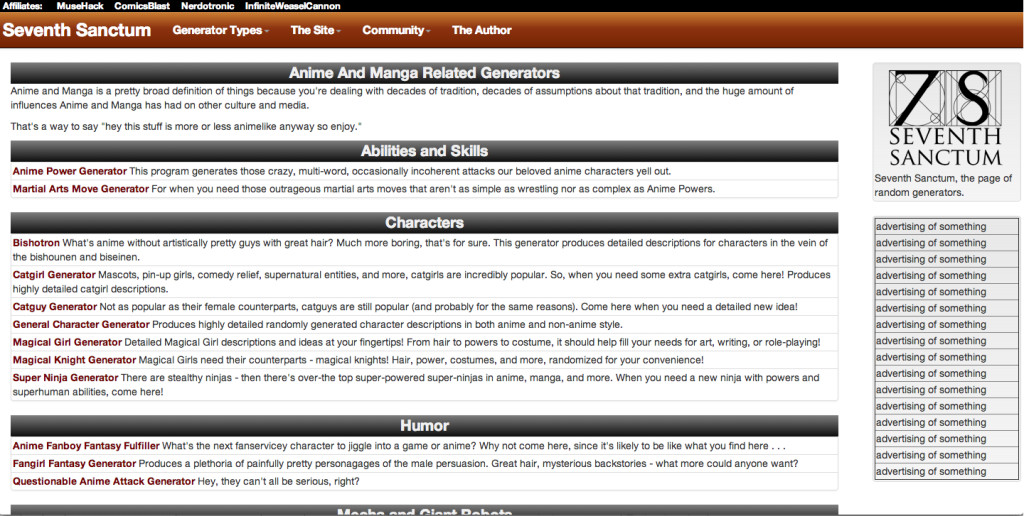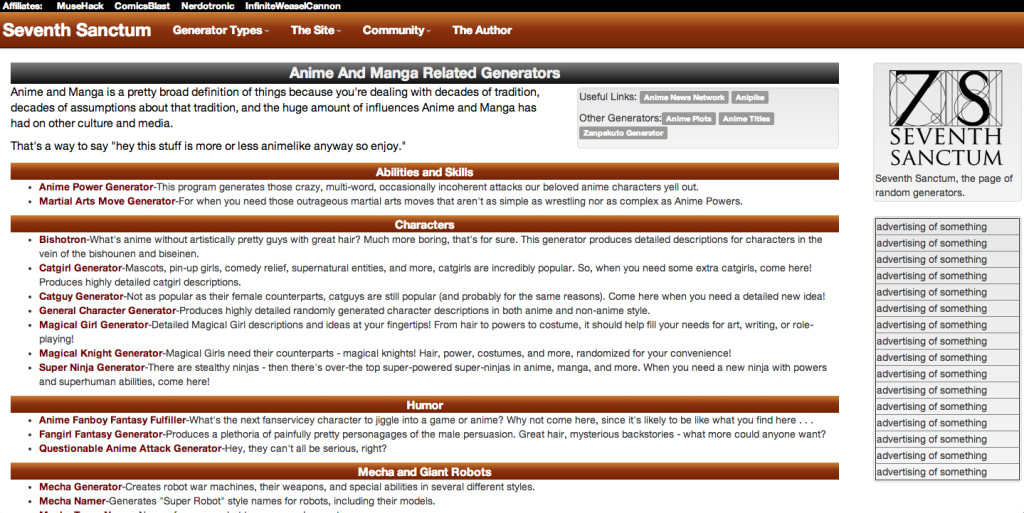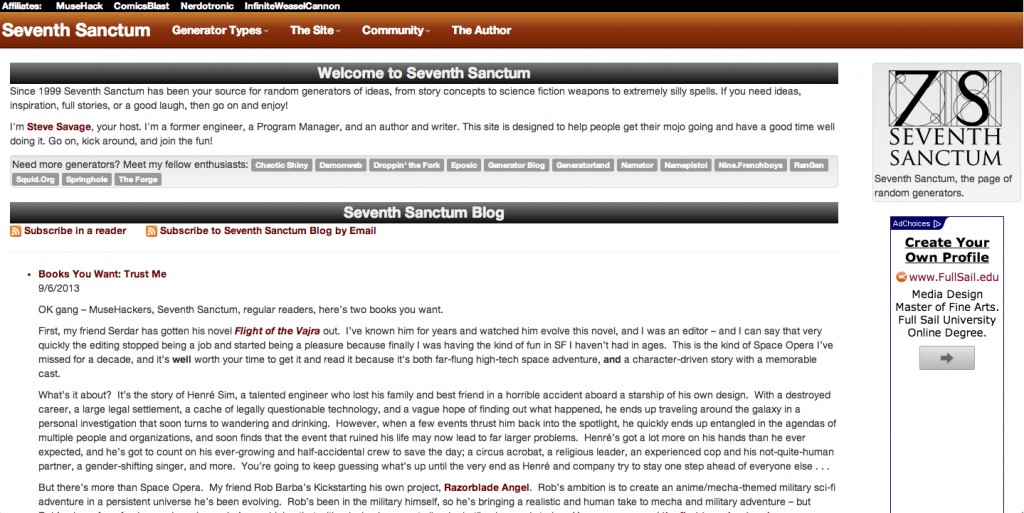Adapting video games to movies is difficult. Lost in Translation has discussed this before, in a general sense. DOOM is a good example of the problems inherent to adapting video games.
The video game itself, while not the first, greatly influenced the nature of first-person shooters. DOOM also allowed for custom levels, reskinning of the monsters, and multi-player. The studio, id Software, used shareware* for distribution. The player took the role of an unnamed Marine assigned to Mars for assaulting his commanding officer after being given the order to shoot civilians. The Marine then became the only thing between Earth and invading demons. id Software estimated that there was two million paid copies and another ten million copies of the shareware demo of DOOM installed. Considering that the game was released in December 1993, twelve million players is an impressive user base.
With the success of DOOM, id produced two sequels plus interstitial levels for the game. Doom 3 returned to the original game’s plot and expanded on it. The new game also pushed against hardware limitations; not all video graphics cards of the time, 2004, could handle the game. The game’s graphics greatly improved on the original’s, and added lighting as an effect. Players would have to switch from weapon to flashlight and back as needed. Like the original, Doom 3 could be modified, adding custom levels, monster skins, and effects. Extra details were added in the unnamed Marine’s PDA, where emails and phone calls of the missing could be played. Doom 3 was a success, selling 3.5 million copies.
In 2005, Universal released the movie Doom, with Dwayne “The Rock” Johnson, Karl Urban, and Rosamund Pike. The plot involves a Rapid Response Tactical Squad of eight marines being sent to investigate and quarantine a situation involving dead and missing scientists on a Martian research lab run by the Union Aerospace Corporation. As the movie progresses, the fate of the scientists is discovered, as is the realization of what happened to the previous population of Mars. Along the way, monsters appear and attack the marines. An autopsy of one of the dead monsters reveals its human origins. The movie ends with a continuous shot that is based on Doom 3 from the eyes of “Reaper”, Karl Urban’s character.
The movie did not perform well in theatres, getting a decent opening weekend then tanking, not even earning back its budget. Much of the problem was the combination of horror and action, two genres that don’t have much in common. Horror requires suspense and tension to be built through atmosphere and limited viewer information. Action uses tension, but suspense is based on stunt work. It is possible to combine the two, but the atmosphere of a horror movie, which typically involves dark or dim areas with ominous sounds, clashes with the needs of an action movie where lighting needs to show the physical conflict, The nature of the monsters also turned fans of the game off from the movie; instead of demons from Hell, the monsters were changed by the addition of a twenty-fourth chromosome, unleashing the victims’ darker sides. The nature of a movie as opposed to a video game also worked against the movie; players are far more active and involved in a game than viewers are with a movie. Video games are active; players make the decisions and pull the trigger. Movies are passive; even with the first-person shooter segment, the viewers are there for the ride, not making decisions. One last factor is the R rating instead of PG-13. Most studios see PG-13 as the sweet spot; a mature enough rating to get adults in while still not preventing teenagers from getting together and going to it. A movie rated Restricted means that the teen market can’t get in. During the summer, that’s the kiss of death for a movie. In late fall, early winter, it’s not as big a problem, but the loss of potential family movie nights could not have helped Doom.
However, as an adaptation, Doom worked. Barring the change in the nature of the monsters, everything one would expect from DOOM was in /Doom/; the weapons, the appearance of the corridors, the lighting, even the monsters all came from the video game. The BFG made an early appearance, working as a Chekhov’s (big f***ing) gun. The production crew took care to make sure that the visual look of the movie mirrored that of the games. The extras on the DVD are well worth the price and show what the crew did to recreate the video game, including how the first-person shooter segment was shot.
Doom isn’t a bad movie. Like Battleship, it’s also not a good movie. Doom may be, though, a rare example of a good adaptation still failing at the box office.
Next week, Scott Pilgrim
* The first episode was free as a demo. Further episodes had to be paid for.
OK I’m now converting the generators over to the new code base! It’s taking effort, but it’s also going faster than I thought. Mostly it’s intense moments of thought combined with sheer “does that work . . . yeah” drudgery. It’ll get easier the more I do, but the drudgery party isn’t going to change.
So here’s a view of an active generator – my only question is the twitter bug – I probably ought to add a few more social media tools in there. Any thoughts?

Steven Savage is a Geek 2.0 writer, speaker, blogger, and job coach. He blogs on careers at http://www.musehack.com/, nerd and geek culture at http://www.nerdcaliber.com/, and does a site of creative tools at http://www.seventhsanctum.com/. He can be reached at http://www.stevensavage.com/.
Here’s a look at the latest site design for the generator page. A friend gave some brutally honest feedback on how the overuse of the brass bars was, well EYE WATERING and had some contrast issues. Fortunately it was Bootstrap to the rescue, and I managed to tweak the look in a way that works and seems to be multi-device friendly.

So thoughts?
Steven Savage is a Geek 2.0 writer, speaker, blogger, and job coach. He blogs on careers at http://www.musehack.com/, nerd and geek culture at http://www.nerdcaliber.com/, and does a site of creative tools at http://www.seventhsanctum.com/. He can be reached at http://www.stevensavage.com/.
Last week’s link round up included several movies being turned into TV series and one TV series being adapted as a movie. The former tends to be successful; the format of a series allows the development of characters and plots over more time. TV series adapted into movies haven’t had the same success. The root cause has been a lack of respect to both the original material and the fans.
Lost in Translation hasn’t looked at many TV series adapted to movies. The more successful ones, like Star Trekand The Naked Gun were made with the original creative staff and cast; the transition was to take what was being done on television to the big screen. In the case of The Naked Gun, the move allowed the creators to indulge without having to worry about restrictions imposed by the network’s Broadcast Standards and Practices group. Meanwhile, works like Land of the Lost and Starsky & Hutch played the ideas behind the original shows for laughs, missing the point of the original work. The A-Team remake ran into the passage of time; The Vietnam War was still lurking in American culture when the TV series debuted while the Gulf Wars didn’t affect the American psyche with returning soldiers vilified.
This leads to the news of Dwayne Johnson, “The Rock” himself, being cast to play Colt Seavers in a Fall Guy remake movie. For those not familiar with the show, The Fall Guy was about a stuntman who moonlighted as a bounty hunter to make ends meet. Colt would use tricks of the stunt trade to help track down the men and women who skipped bail, with the help of his cousin Howie and fellow stunt performer Jody. The show was light action/adventure, with humour coming from the byplay between the core cast. Note that the show wasn’t a comedy, though; the humour came from reactions of characters. The trick is to trim back the 80s era cheese while still keeping the core of The Fall Guy and also feature Johnson and give him a solid role to build on. At the same time, Johnson brings in his own physicality and can bring a new dimension to the character. Ultimately, Johnson has to respect Lee Majors’ work while adding his own element.
What holds for The Fall Guy holds for other movie treatments of old TV series. Just because the 60s, 70s, 80s, and 90s had different approaches to televised storytelling doesn’t mean that series from those decades can be easily held up for ridicule. The shows did have a following; what is seen as cheesy now was once ground breaking. The grim darkness of today’s works will be seen in similar light in time. Respect for the original work and its fans is critical to success.
Next week, Doom.
OK I think I figured out a better look for the library pages – but they’re still kind of . . . dull.
I also am wondering if the links work or not. Maybe it’s time to ditch them or have alternate pages?

Steven Savage is a Geek 2.0 writer, speaker, blogger, and job coach. He blogs on careers at http://www.musehack.com/, nerd and geek culture at http://www.nerdcaliber.com/, and does a site of creative tools at http://www.seventhsanctum.com/. He can be reached at http://www.stevensavage.com/.
It’s been about a week since DC Comics called a meteor swarm upon itself, and things are starting to quiet down. What happened is easy to find; over at Jessica Banks schools you, Jessica and her husband Cam detail the latest problems quite nicely. Why it happened is another question. (more…)
Since I finalized the design, I’ve now started moving it into code. Here’s a demo of the front page.
You’ll notice that I chose the 3rd logo because that one was overwhelmingly popular – and I have to say I dig it’s mixture of complexity, simplicity, and class. Thanks for the feedback. The first logo is also going to appear in a modified form for other things, perhaps buttons or something.
I have to alter the ad space (and color) and I’m having a devil of a time getting the blogfeed to format properly. On the other hand the new components are really smooth to redesign in Bootstrap, and very easy to alter.
I removed the social media buttons as extraneous for now but I might put them back. If there’s any suggestions on how to make it easier to sync up with the Sanctum, fee free to share.
Of course the real test is plugging in live generator code because, well, that’s the critical part of the site. The big issue is getting the nicely formatted forms to work and then getting the output properly and prettily formatted – which sounds easy, but there’s some variable data and presentation in here that may be a pain. I could jam it in unformatted, but it’d be pretty boring and not have the greatest layout.
I’m trying a very non-standard linkroll/siteroll/blogroll – smaller chicklets showing associated sites. I think it actually works.
Steven Savage is a Geek 2.0 writer, speaker, blogger, and job coach. He blogs on careers at http://www.musehack.com/, nerd and geek culture at http://www.nerdcaliber.com/, and does a site of creative tools at http://www.seventhsanctum.com/. He can be reached at http://www.stevensavage.com/.
Philip K. Dick is the most adapted science fiction writer, with eight novels having been transformed into movies and TV series. Some of Dick’s key elements, the questioning of what is real, what is humanity, and what is God, make it difficult to keep the original story intact. The results have been mixed; Minority Report borrowed from Dick’s short story “The Minority Report” but created its own ending. Total Recall was based loosely on “We Can Remember It For You Wholesale”.
The 1968 novel Do Androids Dream of Electric Sheep is typical of Dick’s works. Rick Deckard, a bounty hunter who specializes in hunting rogue androids who blend in with humanity, takes up the search to find and “retire” (read: kill) six Nexus-6 androids while dealing with a home life that is falling apart. Because androids blend in so well with the human populace, several different tests have been created to help determine who is real, including the Voight-Kampff empathy test. Deckard starts his investigation at the Rosen Industries, manufacturers of the Nexus-6 line, where he meets Eldon Rosen, head of the Rosen Association, and his neice, Rachel. Rosen insists that Deckard should give the Voight-Kampff test to Rachel. When she fails, Rosen says it’s because she grew up on a colony ship heading to Proxima that had to turn back.
Meanwhile, one of the escaped Nexus-6 androids, Pris Stratton, has moved into an apartment building with just one other occupant, J.R. Isidore. Isidore is a genetically damaged driver for an animal repair shop; his disability, brought on by radioactive fall-out, prevents him from leaving Earth. Pris befriends Isidore, and uses him to try to stop Deckard from retiring herself and her fellow escaped androids. Interwoven are elements of the setting, a post-nuclear war Earth where radiation is tracked by weather satellites, animals are artificially created because there are so few left, Mercerism where adherents can feel the suffering of Wilbur Mercer as he climbs a mountain while rocks are thrown at him, and off-world colonization.
Ridley Scott’s adaptation, Blade Runner, has had several versions. The theatrical release had Harrison Ford narrating in a voice over and a happy ending using scenes cut from The Shining. The narration was asked for by the studio and added after test audiences had trouble following the movie. An international theatrical release had more violence, including on-screen eye gouging. In 1992, a “director’s cut” – in realty, a workprint prototype – was discovered and screened at an LA film festival. The print did not have the full soundtrack with Vangelis’ music, using a temp track from Planet of the Apes instead, but was successful enough to convince Warner Bros. to create a proper director’s cut with input from Ridley Scott. This cut removed the voice over and the happy ending and added a dream sequence involving a unicorn. Scott, however, was busy at the time, so could not put his full attention on it. Finally, in 2007, he did get the time and put together the Final Cut that included some newly reshot footage and some redubbing. It is the Final Cut that will be reviewed; it is the version that is closest to what Ridley Scott wanted to make.
Blade Runner is definitely an adaption of Do Androids Dream of Electric Sheep, but the movie doesn’t adapt everything from the book. Some changes, such as the year the story is set, were made to reflect that time has passed since the book’s first release. In 1968, 1992 was a distant future, especially with the Cold War threatening to turn hot and nuclear. In 1982, while the Cold War was still happening, it was starting to build back up through tensions; nuclear war was still a possibility but not as immediate. Deckard was no longer a bounty hunter but a former police operative known as a “blade runner” who tracked Replicants who escaped to Earth. Deckard’s bounty hunter comrade, Dave Holden, became another blade runner, one still working with the police. J.R. Isidore became J.F. Sebastian, a genetic designer with Methuselah Syndrome, a genetic disease causing his body to age faster than normal. Rosen Industries became the Tyrell Corporation, with the founder’s name changing to match. Little details, mostly. Other elements were removed completely; Mercerism isn’t shown or mentioned. Deckard’s wife appears only in a photo, though no explanation was given on his marital status.
Despite the changes, the movie holds to the core of Do Androids Dream of Electric Sheep. The hunt for the androids, the Voight-Kampff empathy test, the budding humanity in the Nexus-6 escapees, Tyrell Corporation trying to create an android that can pass the Voight-Kampff test. The visual look of the movie matches the feel of the novel. Blade Runner isn’t a shot for shot adaptation; the movie is as much Ridley Scott’s vision as it is Philip K. Dick’s, but the issues examined – what is real, what is human – come through clearly in both. The end is where the two works diverge the most. In the novel, Deckard returns home to his wife after meditating in Oregon and finding a toad, Wilbur Mercer’s favorite animal. In the movie, Deckard and Rachel leave his apartment to go, well, Scott left that up to the audience.
Is Blade Runner a good adaptation? For the most part, yes, even with the changes. It helps that the movie is a visual feast. Blade Runner has inspired numerous creators, from TV and movies to video games to tabletop RPGs to music. The movie melded film noire with science fiction, predicted several trends and technologies. Blade Runner is a masterpiece on its own. As an adaptation, it picks and chooses from the original novel, taking what it can do and leaving the bits that won’t work.
Next week, the September link round up of adaptation news.
OK gang – MuseHackers, Seventh Sanctum, regular readers, here’s two books you want.
First, my friend Serdar has gotten his novel Flight of the Vajra out. I’ve known him for years and watched him evolve this novel, and I was an editor – and I can say that very quickly the editing stopped being a job and started being a pleasure because finally I was having the kind of fun in SF I haven’t had in ages. This is the kind of Space Opera I’ve missed for a decade, and it’s well worth your time to get it and read it because it’s both far-flung high-tech space adventure, and a character-driven story with a memorable cast.
What’s it about? It’s the story of Henré Sim, a talented engineer who lost his family and best friend in a horrible accident aboard a starship of his own design. With a destroyed career, a large legal settlement, a cache of legally questionable technology, and a vague hope of finding out what happened, he ends up traveling around the galaxy in a personal investigation that soon turns to wandering and drinking. However, when a few events thrust him back into the spotlight, he quickly ends up entangled in the agendas of multiple people and organizations, and soon finds that the event that ruined his life may now lead to far larger problems. Henré’s got a lot more on his hands than he ever expected, and he’s got to count on his ever-growing and half-accidental crew to save the day; a circus acrobat, a religious leader, an experienced cop and his not-quite-human partner, a gender-shifting singer, and more. You’re going to keep guessing what’s up until the very end as Henré and company try to stay one step ahead of everyone else . . .
But there’s more than Space Opera. My friend Rob Barba’s Kickstarting his own project, Razorblade Angel. Rob’s ambition is to create an anime/mecha-themed military sci-fi adventure in a persistent universe he’s been evolving. Rob’s been in the military himself, so he’s bringing a realistic and human take to mecha and military adventure – but Rob’s also a fan of anime and mecha, so he’s combining that with a loving homage to “real robot” anime and stories. You can even read the first two chapters here.
I know these guys. They’re great. They’re talented. They deserve your support – and they’ll entertain the hell out of you.
Steven Savage is a Geek 2.0 writer, speaker, blogger, and job coach. He blogs on careers at http://www.musehack.com/, nerd and geek culture at http://www.nerdcaliber.com/, and does a site of creative tools at http://www.seventhsanctum.com/. He can be reached at http://www.stevensavage.com/.
OK I’ve got work going on to develop a new logo for Seventh Sanctum – courtesy of the awesome Megami Studios who did the MuseHack logo. So which one do you like?
Click below to see full sized!
First Logo
Second Logo
Third Logo
What do you think?
Steven Savage is a Geek 2.0 writer, speaker, blogger, and job coach. He blogs on careers at http://www.musehack.com/, nerd and geek culture at http://www.nerdcaliber.com/, and does a site of creative tools at http://www.seventhsanctum.com/. He can be reached at http://www.stevensavage.com/.








